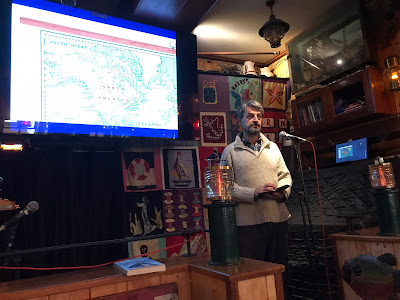Sometimes when researching history you come across surprises. In this case the rare example of a business rooted in the distant past which, astoundingly, still exists and even thrives to the present day.
Who would have believed it that a man proudly named on the above label and who filed what is arguably one of the most important patents in the history of food preservation also founded a commercial enterprise which has not merely survived for nearly two hundred years but has grown and developed into a billion dollar business empire.
It is well known that Stephan Goldner's food canning business collapsed as a result of the Naval preserved meats scandal of 1852. However, the business I'm teasing you about is not even food related...
Look closely at the bottom left corner of the can label at the top of this page. It carries the words "Wertheimer & Co., Printers". Surely it would be very unusual for a printer to put his name on something so utterly prosaic as a food label? - I certainly can’t recall any other example. In fact John Wertheimer was one of the most respected printers in London. Much of his output can be found by searching Google Books for "Wertheimer printer" or variations thereof. In 1844 he began printing the fortnightly "Jewish Chronicle and Working Man's Friend" whose print run is unbroken to this day as the world's oldest and most influential Jewish newspaper, the Jewish Chronicle. Wertheimer built an international reputation, printing books in various languages, but probably the most celebrated work he printed was in 1858 - the original edition of a book called "Anatomy, descriptive and surgical" now universally referred to as Gray's Anatomy - a major technical challenge and a work of global significance.
STEPHEN GOLDNER, of West Street, Finsbury Circus, Merchant, for improvements in preserving animal and vegetable substances and liquids.
 |
| Drawings from Wertheimer's patent and Fastier's brevette d'invention |
... that I have known and been acquainted with Stephan Goldner of Houndsditch in the City of London, Merchant, for a period of seven years and upwards, since May 1839
and later:
... to the best of my knowledge and belief the said Stephan Goldner has resided in London from the month of May One thousand eight hundred and thirty nine to the present time excepting a period of eight months during which the said Stephan Goldner was abroad on commercial transactions but during which period the business in which the said Stephan Goldner is engaged in London namely the manufacturing and vending of preserved provisions according to a process to a process as I have been informed and believe protected by Her Majesty's Letters patent was carried on by the attorney or agent of the said Stephan Goldner
While Stephen Goldner's food business, and the man himself vanished in the 1850s, John Wertheimer's printing business flourished. John Edward Lea joined the firm in 1866 and they became Wertheimer Lea & Co.
Williams Lea grew strongly throughout the twentieth century, the business developing from straightforward printing into the realm of business services outsourcing.The Company remained in family ownership until 2006 when Deutsche Post AG Group bought a 75% stake for 370m euros ($440m, £253m), a proportion of which was used to endow a charitable trust. Later the same year The UK Government's official publisher, The Stationery Office, was acquired.
Design agency Tag Worldwide was acquired in 2011, and the combined business was rebranded as Williams Lea Tag. Revenue was 1.41 billion euros ($1.7 billion) in 2014, hence the reference to "Billion Dollar Corporation" in title of this blog post.
Deutsche Post sold Williams Lea Tag to Private equity group Advent International in December 2017. The business was then described as employing over 10,000 people and operating in more than 40 countries globally.
Current Williams Lea Group brands:

















